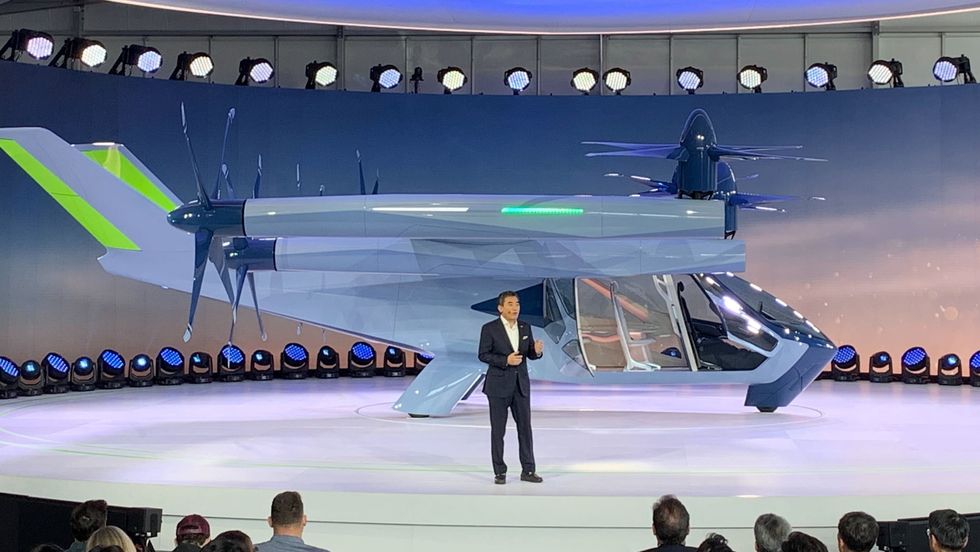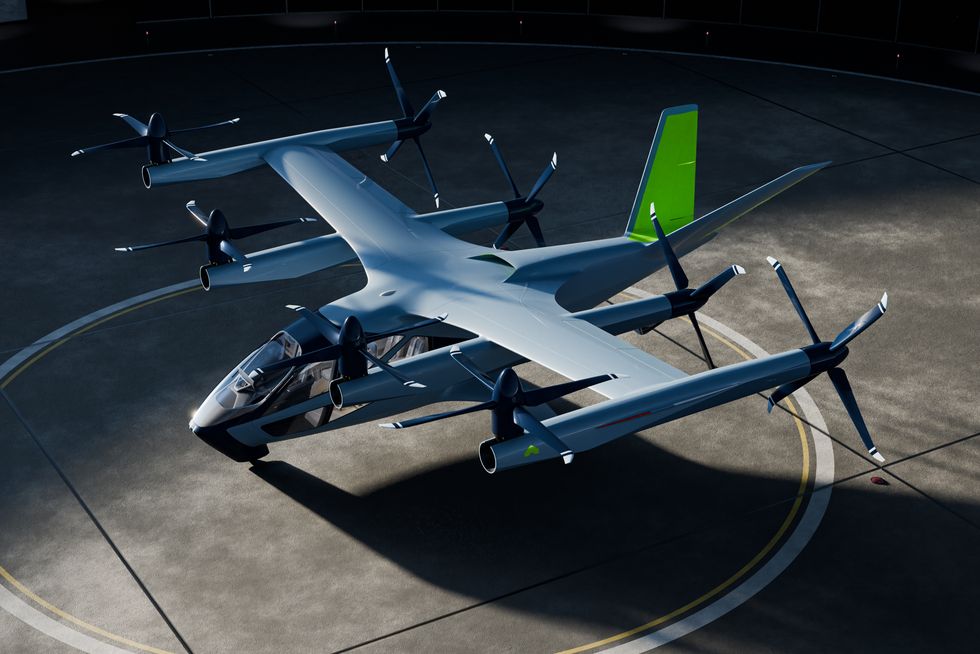The Hyundai Supernal S-A2 promises seating for five, 120 mph, and 20 to 40 miles of range.
Over 30 years ago, Calvin, of Calvin and Hobbes fame, turned his palms skyward, arms outstretched, and screamed to the fates: “Where are the flying cars?” Calvin also demanded to know where were the “moon colonies, personal rockets, zero gravity boots, rocket packs, disintegration rays, and floating cities.”
He had a point.
Where are the flying cars? We have been promised flying cars for at least as long as there have been cars that didn’t fly, and for at least as long as there has been traffic we dreamed of flying over instead of sitting in. No less an aviation luminary than Glenn Curtis patented an Autoplane in 1917, and a parade of dreamers and investor-seekers has followed.

Well, if we’re ever getting flying cars, CES is likely where we’ll see them first. And we have: Bell Textron showed a magnificent full-size mockup of a flying vehicle at CES in 2019, promising to partner with Uber Elevate to have them hovering around certain cities by… last year.
CES also saw the Pal-V Liberty concept and something called Electrafly last year. Aska showed a flying car at CES last year. Other companies—Archer Aviation, Joby Aviation, and Eve Air Mobility—are all supposed to be at various points in development promising personal flying cars. There are more, almost too numerous to mention.
But major automakers—GM, Toyota, Hyundai, and Honda—have all promised something less like a flying car and more like a small helicopter at various CES gatherings. Subaru showed its Air Mobility Concept at the Japan Mobility Show in Tokyo last October.
All these things are powered by a number of smallish rotor assemblies lifting them off the ground, instead of the traditional single blade on top and smaller tail rotor out back that have made up most helicopters. And none really look like cars at all.
Well, at this year’s CES Hyundai is back, showing off its Supernal S-A2 electric vertical takeoff and landing (eVTOL) craft. It follows on the tail rotors of the SA-1, which it debuted to much fanfare at CES in 2020.
S-A2 will seat five (four passengers and a pilot), fly 120 mph at 1500 feet, and offer a range of 20 to 40 miles. Lift and forward movement will come from eight “all-tilting rotors.” And it will be powered by electricity alone, eliminating emissions and cutting noise down to what Hyundai promises will match that of a dishwasher.
The S-A2 is the product of Hyundai Motor Group’s Advanced Air Mobility (AAM) company Supernal LLC. Supernal has 600 employees working on this project.
While no date was given for when we will see these in operation, Hyundai/Supernal reiterated its plan to operate them at purpose-built “Vertiports” in or near major cities.
“Quiet electric flight will enable vertiports to be in cities, at airports, and elsewhere for seamless integration with existing transit options,” Hyundai/Supernal said at CES.

“Combined with air traffic control improvements and advanced micro-weather forecasting, S-A2 and vertiports will facilitate mobility far beyond what existing and projected ground infrastructure can deliver.”
Will we ever see any of this stuff in the real world? Did we really waste all that time looking at covers of Popular Mechanics? And whatever happened to the Moller Sky Car, anyway? (He’s still working on the Skycar 400 out in California.)
But CES is at least partly a dream experience, so dream on, but keep room on your home screen for the Supernal S-A2 app, because you never know.

